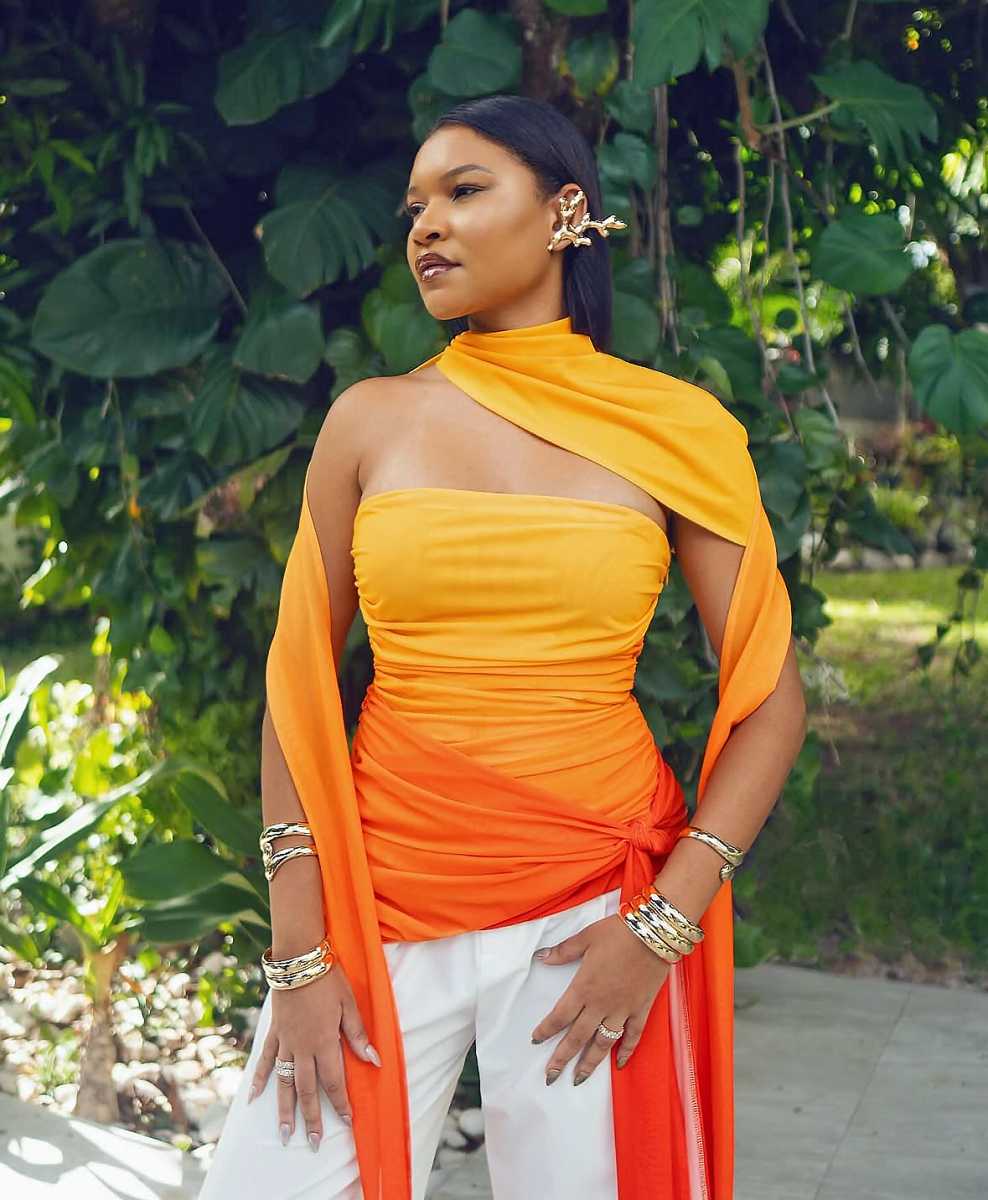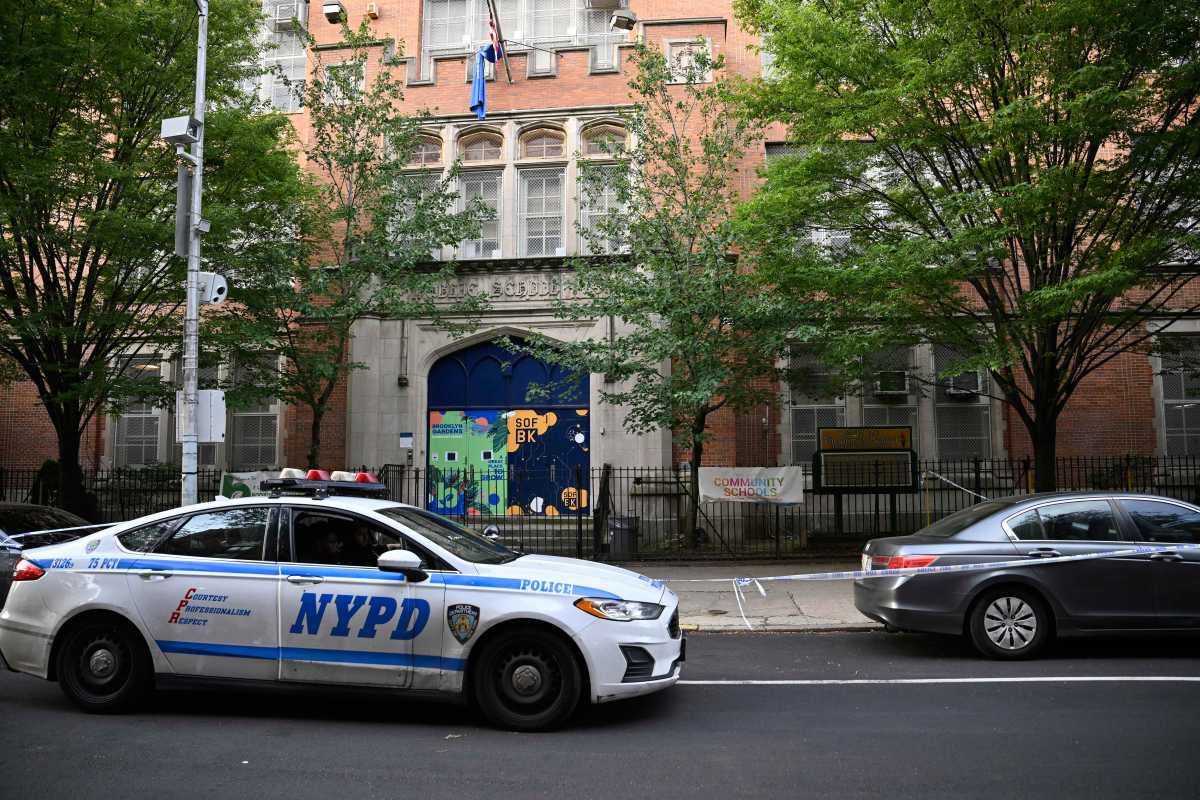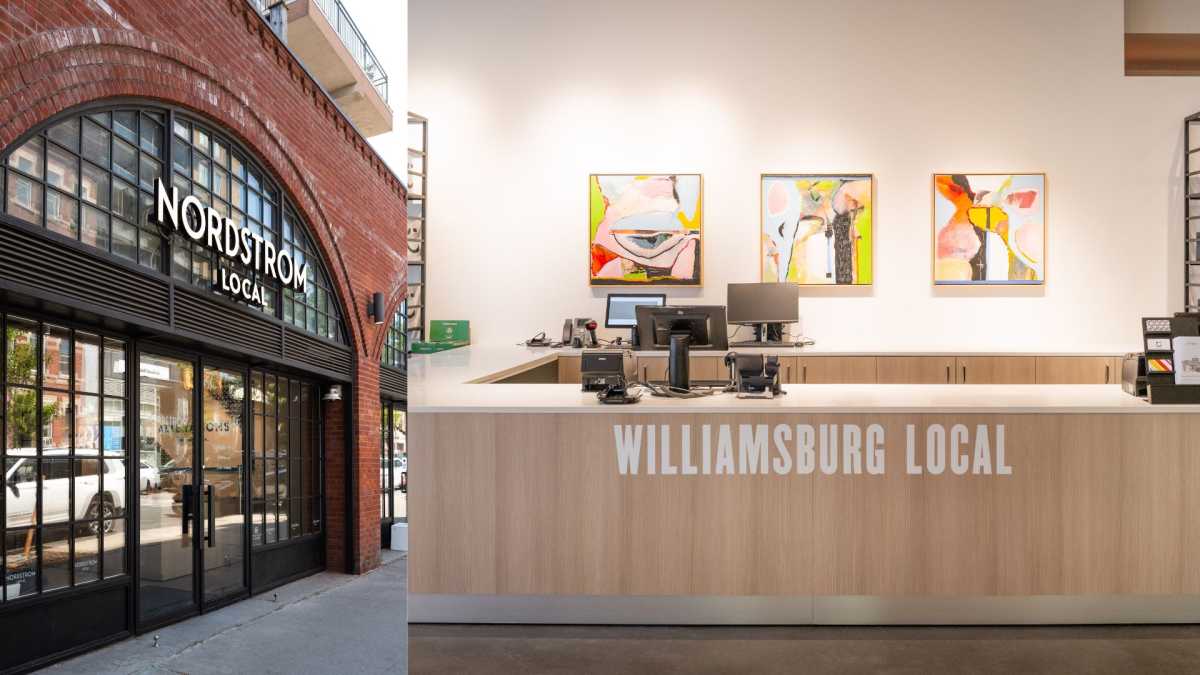The new front entrance to the Brooklyn
Children’s Museum will be a sunny yellow beacon attracting families
to the corner of St. Marks and Brooklyn avenues in Crown Heights
when it is completed in 2006. The new entrance and expansion
plans were unveiled by architect Rafael Vinoly on Wednesday morning
at his design firm on Vandam Street in Manhattan.
"This whole effort to re-energize the building puts the
building in a new context," said Vinoly. "We are giving
it an image and presence in the community and having the building
thought of as a playground for the neighborhood. The shape is
like a gigantic toy, because there is nothing better than transforming
it into a tool – not just something to contemplate."
The award-winning architect, wearing three pairs of eyeglasses
(on his head, his face and around his neck) enthusiastically
described how the current building at 145 Brooklyn Ave. will
be annexed by his new, boomerang-shaped addition.
The current entrance, flanked by wrought-iron fences on each
side, is at the top of a flight of concrete steps and is akin
to a subway entrance leading down into the subterranean museum.
The new 4,000-square-foot entrance designed by Vinoly, in the
same location, will be at street level and will be flanked by
yellow wings that run along St. Marks and Brooklyn avenues, wrapping
around the current building on two sides.
The two-story expansion will bring the museum above ground. The
top level of the V will be covered with bright yellow tiles "perforated"
with porthole windows set at irregular intervals of the walls
to give even small children a view of the outside. The bottom
half of the structure will be glass. The cantilevered upper floor
will shelter the lower floor from direct sunlight while still
allowing people inside to see the surrounding neighborhood and
Brower Park.
Vinoly has also won design commissions for the renovation and
enlargement of the historic Snug Harbor Cultural Center in the
Staten Island Performing Arts Complex, which will be completed
next year, and the Bronx Criminal Court Complex, scheduled for
2007. He is also a member of Think, a multidisciplinary international
team of architects and engineers that is one of the six teams
chosen to develop plans for the World Trade Center site.
His $39 million renovation will double the size of the Brooklyn
Children’s Museum.
Children’s Museum President Carol Enseki pointed out that the
additional 51,000 square feet of space will be used for display
and storage of the museum’s collection of 27,000 cultural and
natural history objects, for science and cultural exhibitions
and extended program areas for toddlers. The addition will also
include revenue generators like the Kids Shop and Kids Cafe (including
access to the rooftop terrace and a birthday party room), as
well as a "sun-filled" library and a new 200-seat theater.
The expansion will also provide new workshop space and headquarters
for the Museum Team, an education and leadership program run
by the museum, which is a free, after-school, weekend and summer
program for 800 kids ages 7 to 18.
The new 102,000-square-foot museum will be able to serve as many
as 400,000 visitors annually – up from its current capacity of
250,000, said Enseki.
"Five years ago, our Monster Mash Halloween program brought
in 1,500 visitors," said Enseki. "This past event brought
in 2,500. We sincerely do need a much larger building."
In addition to the innovative artistic statement the museum’s
addition will be making in the borough, it is also a national
leader in ecologically friendly design.
The museum is slated to be the nation’s first "green"
children’s museum, certified by the Leadership in Energy and
Environmental Design program of the U.S. Green Building Council.
The systems and materials incorporated into the expansion will
allow the museum to take advantage of solar energy and even well
water among other cost-saving, eco-friendly ideas. For example,
the geothermal heating and air-conditioning system will use water
from 300-foot-deep wells, reducing energy use and eliminating
noise and emissions of onsite cooling towers.
Enseki also said that sensors will monitor the exhibition spaces
for the presence of visitors and will adjust the lighting and
ventilation accordingly. These features are expected to save
the city, which owns the building, an estimated $103,000 in energy
costs, said Enseki.
The museum will also create exhibits that teach the children
about its "green" features. Exhibits in the planning
stages include an "Energy Garden," to demonstrate how
the museum harvests its solar power, and "Energy Exploration
areas," where children can learn how the museum uses water
to heat and cool the building. Visitors will learn about renewable
resources, such as bamboo, which was chosen for the flooring
because it is one of the world’s fastest-growing plants.
"Some people say it’s not easy being green," said Enseki,
"but it’s well worth the effort."
Vinoly gave a digital presentation demonstrating how the 103-year-old
museum has changed over the years, moving from the Adams Mansion
and Smith House in what is now Brower Park in Crown Heights to
the museum’s current building, designed by Hardy Holzman and
Pfeiffer, and built in 1977.
Construction on Vinoly’s addition, to be overseen by the city’s
Department of Design and Construction, is scheduled to begin
in the fall and is to be completed in 2006. Funds for the museum
expansion came from the city ($25.17 million) and the state ($1.5
million). Although the museum has already raised $5.4 million
from private donors, it hopes to raise $7 million more.
The museum will continue programs and services in the existing
building during the construction.
"My boss [Mayor Mike Bloomberg] says good design isn’t more
expensive, it’s just better," said Department of Cultural
Affairs Commissioner Kate Levin at the unveiling. "The Brooklyn
Children’s Museum has created something truly special for the
city."
For more information about the Brooklyn Children’s Museum,
visit their Web site at www.brooklynkids.org
or call (718) 735-4400.

























